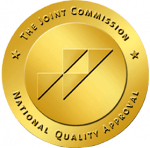Xanax, also known as Alprazolam, is a prescription medication used to treat anxiety and panic disorders. Its calming effects can lead to addiction and abuse if not taken as prescribed.
In this article, we will explore the understanding of Xanax, its effects and abuse, common drug combinations, and the alarming statistics surrounding its misuse. We will also delve into the treatment options available for those struggling with Xanax addiction and abuse.
If you’re seeking information for yourself or a loved one for Xanax misuse, call 844-822-5800 to find treatment.
Key Takeaways:
- Xanax addiction is a serious issue that can lead to physical and psychological dependence on the drug.
- It is important to understand the effects of Xanax and how it can be abused to prevent addiction and seek help if needed.
- Combining Xanax with other substances can increase the risk of addiction and overdose, making it crucial to use the drug responsibly.
Understanding Xanax Addiction And Abuse
Xanax addiction and abuse continue to be pressing issues, posing significant challenges to individuals and families across the United States. It is crucial to understand the complexities of Xanax addiction, its effects, and the available treatment options to address this growing concern.
Addiction To Xanax (Alprazolam)
Addiction to Xanax, also known by its generic name Alprazolam, often stems from its prescription use for managing anxiety and related disorders.
When prescribed, Xanax is effective in relieving symptoms of anxiety and panic disorders. This is due to its ability to enhance the effects of a neurotransmitter called GABA in the brain. However, it’s important to note that Xanax has a high potential for dependency and abuse. Prolonged use can lead to tolerance, meaning higher doses are needed to achieve the same effect. This can make it challenging to discontinue use. Both psychologically and physically, individuals may experience negative effects when trying to stop using Xanax. These can include increased anxiety and agitation, as well as withdrawal symptoms such as tremors, insomnia, and seizures.
Understanding Xanax
Understanding Xanax requires insight into its classification as a benzodiazepine, its pharmacological effects on the central nervous system, and the risks associated with its misuse and abuse.
As a potent central nervous system (CNS) depressant, Xanax is commonly prescribed for the treatment of anxiety disorders, panic attacks, and other related conditions. It enhances the inhibitory neurotransmitter gamma-aminobutyric acid (GABA) in the brain, calming and relieving anxiety symptoms.
Despite its therapeutic benefits, Xanax has the potential for abuse and physical dependence, particularly when used outside of prescribed guidelines. Misuse of Xanax can result in various adverse effects, including drowsiness, dizziness, impaired coordination, and respiratory depression. Prolonged misuse may lead to psychological dependence and withdrawal symptoms upon discontinuation, underscoring the importance of cautious prescribing and monitoring practices.
When Xanax is combined with other CNS depressants such as alcohol or opioids, the risk of overdose and life-threatening complications significantly elevates. The concurrent use of these substances can intensify the sedative effects, posing a grave threat to respiratory function and overall well-being.
Xanax Effects And Abuse
The effects of Xanax abuse can manifest in various physical and mental symptoms, often escalating to life-threatening situations requiring immediate medical and professional intervention.
Physically, individuals may experience drowsiness, dizziness, and slurred speech as common symptoms. Long-term abuse can lead to respiratory depression, seizures, and even coma.
The mental impact can include confusion, memory issues, and difficulty concentrating. In extreme cases, overdose may occur, leading to severe respiratory depression, decreased blood pressure, and potentially fatal consequences.
It is crucial for those struggling with Xanax abuse to seek help from healthcare professionals, as emergency treatment may be necessary to address the acute effects and prevent long-term health complications.
Common Xanax Drug Combinations
Xanax is often involved in dangerous drug combinations, particularly when used with alcohol or other sedatives, significantly impacting behavior, judgment, and coordination.
Mixing Xanax with alcohol or sedatives can lead to severe impairment of cognitive and physical functions, causing dizziness, drowsiness, and even loss of consciousness.
These effects can be exacerbated when combined with other substances, leading to a higher risk of accidents and injuries. The interaction between Xanax and alcohol or sedatives can result in severe respiratory depression, posing life-threatening consequences.
The impaired judgment and coordination resulting from this combination can also increase the likelihood of engaging in risky behaviors and making dangerous decisions.
Xanax Statistics
The statistical prevalence of Xanax abuse underscores the urgent need for effective treatment strategies, particularly in addressing co-occurring mental health disorders such as depression and anxiety.
Recent studies have shown that Xanax, a benzodiazepine medication, is highly prevalent and has a high potential for abuse. The 2019 National Survey on Drug Use and Health revealed that over 5 million people aged 12 and older misused benzodiazepines, including Xanax. Additionally, the Substance Abuse and Mental Health Services Administration (SAMHSA) reported that almost 18% of individuals seeking substance abuse treatment identified benzodiazepines, including Xanax, as their primary substance of abuse.
Xanax Addiction Treatment
Treating Xanax addiction requires a multi-faceted approach involving medical supervision, therapy, and comprehensive recovery programs aimed at restoring individuals’ health and well-being.
Detoxification is often the initial step in the treatment process, where the individual’s body is gradually rid of the drug’s toxic residue under professional medical supervision.
Following detox, clinical interventions, such as cognitive-behavioral therapy, may be utilized to address the psychological aspects of addiction and equip individuals with relapse-prevention strategies.
Therapeutic support, including individual and group counseling, plays a pivotal role in helping individuals understand the underlying causes of their addiction and develop coping mechanisms.
Broader recovery processes encompass lifestyle modifications, ongoing support systems, and the integration of healthy habits to promote sustained recovery.
Frequently Asked Questions
What is Xanax addiction?
Xanax addiction refers to the excessive and compulsive use of the prescription drug Xanax, which is typically prescribed to treat anxiety and panic disorders. This can lead to physical and psychological dependence on the drug, causing harmful effects on an individual’s health and well-being.
What are the signs and symptoms of Xanax addiction and abuse?
Some common signs of Xanax abuse include increased tolerance to the drug, withdrawal symptoms when not taking it, using more than the prescribed amount, and inability to control or stop its use. Other symptoms may include drowsiness, confusion, slurred speech, and changes in behavior.
Who is at risk for Xanax addiction?
Anyone who takes Xanax for an extended period, especially in higher doses, is at risk of developing addiction and abuse. People with a history of substance abuse, mental health disorders, and those who combine Xanax with other drugs or alcohol are also at a higher risk.
What are the potential consequences of Xanax addiction and abuse?
Long-term Xanax addiction and abuse can lead to serious health consequences, including respiratory problems, memory loss, liver and kidney damage, and increased risk of overdose and death. It can also have a negative impact on relationships, work or school performance, and overall quality of life.
How can one overcome Xanax addiction?
Overcoming Xanax addiction and abuse requires seeking professional help, such as therapy, support groups, and detox programs. It is crucial to gradually decrease dosage under medical supervision to prevent severe withdrawal symptoms. Building a strong support system and finding healthy coping mechanisms are also essential in recovery.
How can Xanax addiction be prevented?
To prevent Xanax addiction and abuse, it is crucial to use the medication exactly as prescribed by a doctor and never to share it with others. Avoid using Xanax for extended periods, and do not mix it with other drugs or alcohol. Seeking alternative treatments for anxiety or panic disorders can also help prevent dependence on Xanax.


